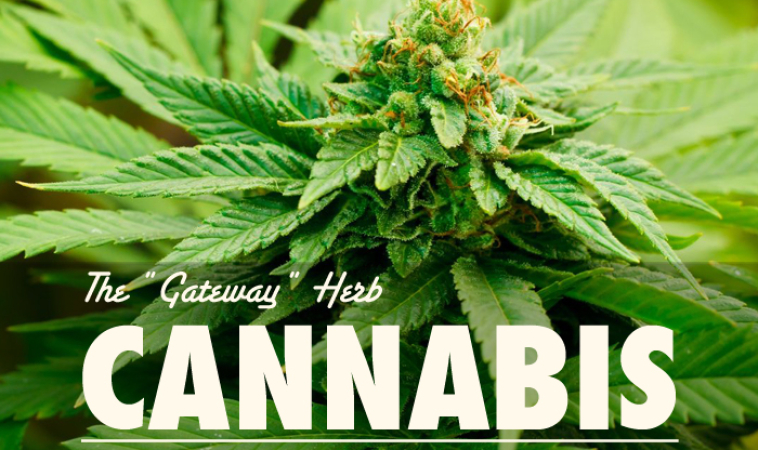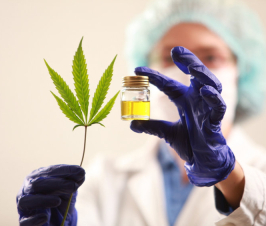Dr. Rob Streisfeld, ND
@DocRob
The documented and historical use of Cannabis as medicine goes back well over 5,000 years. While this factoid is quite significant, the modern conversation and potential applications for Cannabis in healthcare today has really just begun. The excitement around the potential applications being discovered thru research and increased scientific understanding has caught global attention, and while all proper appreciation is justified, we must not got caught up in the fact that the planet is loaded with healing plants teeming with amazing flavonoids, terpenes, and more.
As we continue to delve into the world of Cannabis, some basic principles in botanical medicine come to mind. Under what conditions was the plant grown, specific extraction methods used, and ideal delivery system for optimal therapeutic benefit are a few aspects definitely worth a mention when utilizing plant based medicine.
Growing Conditions
There is an ongoing debate as to whether indoor or outdoor growing is better. Lighting and environmental controls sometimes offer an advantage, especially where weather conditions may limit growing ability. Growing in soil vs hydroponically also has its pros and cons.
More importantly from the medicinal perspective, it is important to know what nutrients, fertilizers, and/or pesticides were used in the cultivation process. We know that many chemicals, heavy metals, and other compounds end up in the end product, and can be counter-productive when using Cannabis to heal. When Cannabis is used as medicine, advise patients to make sure the grower is using organic soil (if soil based), fertilizer, and nutrients and that no harmful pesticides are applied to the plant.
Extraction Methods Used
Many find the process of extraction a true art, with the artist hoping to maintain the highest level of terpenes, cannabinoids, etc without leaving any of the solvent behind. The costs and time required to get final product are always a consideration when comparing extraction options.
Dry sieve, water, and isopropyl alcohol have been considered more traditional techniques, while CO2, butane/propane, and hexane have become quite popular of late. CO2 is arguably the safest and least-toxic, but is more expensive than the others. Scientific testing allows us to test for residues, heavy metals, cannabinoid concentrations, and should be available upon request from anyone legitimate selling Cannabis, or any other plants for that matter, as medicine.
Delivery Systems Recommended
Cannabinoid receptors have been identified in highest concentrations in the brain and the enteric nervous system. Research is beginning to uncover which of the 100+ cannabinoids work best for specific individual medical conditions, and perhaps which delivery system is ideal. While many patients are most familiar with smoking Cannabis in the form of a joint or cigarette, herbal products, including Cannabis, are available in variety of forms and delivery options. Edibles/Medibles have long been an accepted mode of delivery, from candies and brownies to newer technologies used in things like chewing gum. Sublingual tinctures/ extracts are gaining in popularity, and topical salves/ creams are also being introduced into the market. Herbal vaporization of oils and extracts is probably the most popular, thanks in large part to public awareness of e-cigarettes by the tobacco/nicotine industry. In fact, “Vape” was Oxford Dictionary’s 2014 word of the year. When addressing a patient with a qualified medical condition for Cannabis, it is important to consider patient compliance when suggesting a form of the plant to use. Traditional smoking may actually be counter productive, as the heat and smoke can inflame mucosal surfaces, leading to a stress response and unnecessary, unwanted cortisol production. G.I. issues such as Ulcerative Colitis may best be addressed with edibles where as neurological conditions may respond better to sublingual tinctures or vaporization.
While the use of Cannabis as medicine is very exciting and with great promise for safe, effective treatment of numerous conditions, it is imperative that as practitioners we ensure that all herbal medicine is of the highest quality. We must also recognize the different delivery systems and how they may address a patient’s specific needs. Let us not forget key factors such as sustainability, herb-drug interactions, and potential side effects as well.
Even though Cannabis and the Endo-cannabinoid system has caught global attention of late, we as Naturopaths recognize that this is just one plant out of a great many Nature has made available to us. The opportunity is now to use the growing awareness, appreciation, and understanding of one amazing plant, to champion the use of herbal medicine in general.
Is Cannabis the gateway herb leading to a greater appreciation of plant based therapeutics in this country and beyond?
 Dr Rob Streisfeld is a passionate consumer advocate and educator with over 12 years of Natural Health & Natural Products Industry experience. A Doctor of Naturopathic Medicine and Certified Natural Food Chef, “Doc Rob” as widely known, provides an informed and innovative perspective to support healthy choices for individuals, groups, and more. He is also an industry consultant helping with marketing, PR, and other business development needs.
Dr Rob Streisfeld is a passionate consumer advocate and educator with over 12 years of Natural Health & Natural Products Industry experience. A Doctor of Naturopathic Medicine and Certified Natural Food Chef, “Doc Rob” as widely known, provides an informed and innovative perspective to support healthy choices for individuals, groups, and more. He is also an industry consultant helping with marketing, PR, and other business development needs.
Over the past decade, Doc Rob has helped to identify and expand key health categories such as probiotics, enzymes, whey protein, fermented foods, whole food supplements, and more. His recent passion is rooted in cannabis, cannabinoids, and the benefits they offer.

















